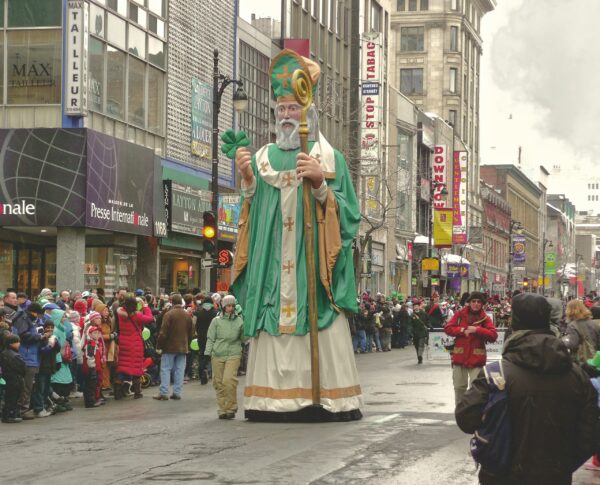St. Patrick’s Day is more than just a day on the calendar to drink Guinness. It’s a vibrant celebration of Irish culture and the legacy of St. Patrick, who played a pivotal role in bringing Christianity to Ireland. His use of the shamrock as a symbol to explain the Holy Trinity is a story woven into the fabric of the day, bridging ancient traditions and modern festivities.
Why do we drink on St. Patrick’s Day?
The tradition of drinking on St. Patrick’s Day is deeply rooted in the historical and cultural fabric of the celebration. Originally a Christian feast day, St. Patrick’s Day commemorates the saint’s death and was traditionally a pause in the Lenten season’s strictness. The day allowed the faithful a reprieve from the austerity of Lent, permitting them to indulge in food and drink that was otherwise forbidden.
This respite included the lifting of Lenten restrictions on eating meat and drinking alcohol, thus ale and whiskey became integral to the festivities. What started as a religious observance gradually morphed into a general celebration of Irish culture, with the day serving as a testament to Ireland’s rich heritage, replete with music, parades, and dancing—all typically enjoyed with a pint in hand.
As Irish immigrants spread across the globe, they took their traditions with them, transforming St. Patrick’s Day into a worldwide celebration. The act of drinking on this day has evolved to become a symbol of Irish culture, embodying a sense of camaraderie, joy, and the enduring spirit of the Irish people. It’s a day when everyone can be Irish, joining in the communal enjoyment of food, drink, and festivity, and celebrating the broader significance of Irish cultural contributions to the world.
The modern celebration, with its parades, green beer, and widespread revelry, may seem far removed from the day’s origins as a religious feast. Yet, it remains a day for people around the world to connect with Irish culture, embracing the joviality and communal spirit that the day promotes, often expressed through the enjoyment of Irish beverages and the iconic toast, “Sláinte,” reflecting the warm-hearted and convivial essence of the Irish.

Who was St. Patrick?
St. Patrick was not Irish by birth but became an integral part of Ireland’s identity. Born in Britain near the end of the 4th century, he was originally named Maewyn Succat. He adopted the name Patrick or Patricius, upon his religious ordination. His life took a dramatic turn at sixteen when he was kidnapped by Irish raiders and enslaved in Ireland. This period of captivity was pivotal; isolated and frightened, Patrick turned deeply towards his Christian faith.
After six years, he claimed to have heard the voice of God in a dream, instructing him to leave Ireland. Escaping his captors, he returned to his family and further embraced his Christian beliefs, eventually becoming a bishop. Feeling a compelling duty to convert the Irish to Christianity, Patrick returned to the land of his enslavement, armed with unwavering faith and determination.
Patrick’s missionary work in Ireland was groundbreaking. He skillfully integrated traditional Irish symbolism and rituals into his Christian teachings, using familiar cultural symbols like the shamrock to explain the Holy Trinity, thereby making his teachings more relatable to the Irish populace. Though the story of him banishing snakes from Ireland is mythological, it metaphorically signifies his role in the eradication of pagan practices.
His legacy is monumental, transcending mere historical figure status to become a symbol of Irish heritage and resilience. The annual celebration of St. Patrick’s Day on March 17th, believed to be the date of his death, commemorates his life and the spread of Christianity throughout Ireland, showcasing the enduring impact of his mission.
Modern day celebrations
In contemporary times, St. Patrick’s Day transcends geographical and cultural boundaries, embracing anyone wishing to partake in the spirit of the day. Parades, green-dyed rivers and green beer, and the global landmarks bathed in green light are testaments to its worldwide appeal. These festivities, while fun, also serve as a reminder of Ireland’s historical journey and the resilience of its people, encouraging everyone to reflect on the broader meanings of heritage and community.
Conclusion
With every holiday, it’s crucial to remember the day’s origins and why we celebrate it. St. Patrick’s Day is a time for unity, reflection, and embracing a culture steeped in rich history and tradition.
And don’t forget that Saucey can help you celebrate with a pint of stout or a bottle of Irish whiskey. Just visit our site and enter your address to see what’s available in your area for same-day delivery.


